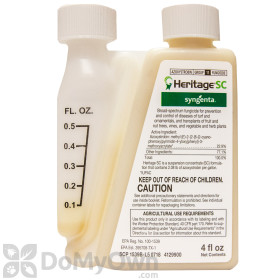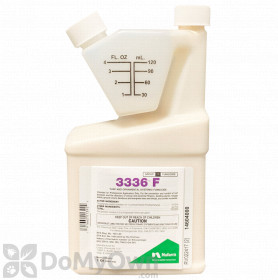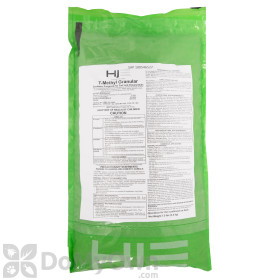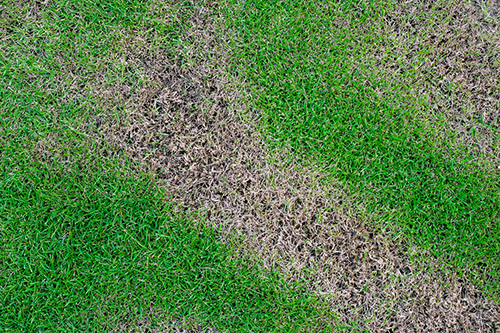
When most people think of fungus outdoors, they think of mushrooms. Mushrooms are a lawn fungus, but there are many other types of fungi that can damage lawns, ruining even the most well-maintained lawn quickly.
Homeowners with prior fungal problems will know that the best way to prevent fungus from damaging your lawn is to apply a preventative fungicide treatment. Once a disease has taken hold in a lawn, getting rid of the disease and repairing the damage can be time consuming, expensive, and difficult.
Fortunately, applying preventative fungicide treatments can help keep your lawn healthy and disease-free.
If you want to keep fungal diseases from destroying your lawn, use this guide to learn about common lawn diseases, how to choose the best fungicide for your lawn, and how you can prevent disease from ruining your lawn with fungicides.
What are Fungicides?
Fungicides are used to control or prevent fungal disease. Fungicides work by stopping or killing the fungus that causes a lawn disease, which prevents the disease from infecting plants and spreading throughout the lawn.
Unfortunately, fungicides cannot completely "cure" grass or plants that have already been affected by a lawn disease. However, if applied quickly enough, fungicides can stop the spread of the disease and help plants recover from disease.
Fungicides also do not control or prevent damage to grass or plants caused by insects. For this reason, be sure to determine if your lawn damage has been caused by a fungus, pest, or something else before treating your lawn.
Common Diseases Treated by Fungicides

Fungus or fungi, as they are known collectively, are like weeds in that certain fungi are prevalent in different areas of the country. Where a fungus is found depends on temperature, humidity, and local crops. Here are some of the most common lawn diseases caused by fungi.
Anthracnose - Anthracnose is a fungus that has two stages, one that kills the leaf blades of grass and a second that affects the base of the turf and lower stems of grass blades. Depending on your lawn, you may see one stage or both. Anthracnose can turn grass blades yellow with tan lesions and dark, fuzzy spots in stage one and rot the stems of grass in stage two. The fungus is prevalent when lawns are in times of stress, such as drought and excessive heat. Learn more about anthracnose and how to treat it in our anthracnose guide.
Brown Patch - Like the name implies, the brown patch fungus can cause brown patches to form in your grass during the summer months. Brown patch is typically found in tall fescue, perennial ryegrass, and bent grass, and only kills the leaves of grass, leaving the roots unaffected. To learn more about how to treat brown patch, click here.
Dollar Spot - Dollar spot is a fungus that creates unsightly round patches of dead, bleached grass throughout a lawn. More common on golf courses and closely cut lawns, dollar spot is prevalent in bent grass, Bermuda, fescue, ryegrass, and Kentucky bluegrass. Click here to learn how to treat for dollar spot.
Leaf Spot - Leaf spot is a cyclical disease that begins with lesions or spots on grass and turns into rot and the death of grass (called "melt out"). The spots may have yellow or purple borders and several spots may converge into one large spot. Learn more about leaf spot and how to treat it in our guide.
Powdery Mildew - Powdery mildew is a fungus that gives grass the appearance of having been sprinkled with flour or baby powder. The fungus is largely cosmetic and does not damage the grass, but it can be unsightly in a yard. Learn how to prevent powdery mildew in our guide.
Types of Fungicides
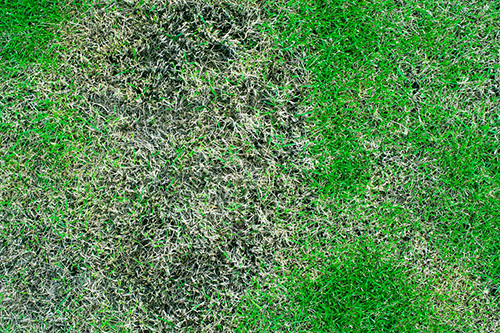
While fungicides come in a variety of application types including liquids and granules, it's important to understand the different qualities of fungicides when determining which fungicide would work best for your lawn.
Preventative vs Curative
Preventative fungicides are designed to protect plants from becoming infected with disease. After a preventive fungicide is applied, a plant is better able to fend off fungal disease infections. If a lawn has been previously infected with a fungal disease, applying a preventative fungicide can prevent the fungus from returning to the lawn.
Curative fungicides work to slow and stop fungi from damaging the plant tissue after the plant is infected. While curative fungicides cannot repair damage to a plant, they stop or significantly slow the disease and damage from spreading.
Some fungicides, such as Eagle 20EW Specialty Fungicide or Heritage G Fungicide, have both curative and preventative properties.
Systemic vs. Contact
Systemic fungicides are absorbed into plants upon contact and move within the plant to protect against and kill fungus. Depending on where the systemic fungicide is absorbed by the plant, the fungicide can move a short distance within the plant (from the tip of a leaf to the base of a leaf) or throughout the entire plant (from the roots upward).
Contact fungicides remain on the surface of the plant and are not absorbed. Used exclusively in preventative treatments, contact fungicides will only create a protective barrier against fungicides on the plant where treatment has been made. Contact fungicides have a residual of several days and need to be reapplied as the plant grows out, and after being washed away by rain or an irrigation system. If the plant does not come in contact with the contact fungicide, it will not be protected from fungi.
Narrow-Spectrum vs. Broad-Spectrum
Narrow-spectrum fungicides are extremely specific, effective against only a few types of fungi. Most narrow-spectrum fungicides are systemic (meaning they can be safely absorbed into plants). The fungi targeted by narrow-spectrum fungicides are usually closely related.
Broad-spectrum fungicides can be used for a wide variety of fungi (often unrelated). Most contact fungicides (those that rest on the surface of the plant and are not absorbed) are broad-spectrum.
Mode of Action and Active Ingredients
The mode of action refers to how the active ingredients in a fungicide affect the fungus. Some fungicides damage the cell membranes of the fungi, while others may interfere with key metabolic processes such as respiration, causing the fungus spores to die. Different active ingredients can work on fungus in the same way, thus sharing the same mode of action.
Different fungal diseases require different modes of action to be treated. It is important to match the active ingredients to the fungal disease you are trying to prevent or treat.
Preventing Fungicide Resistance
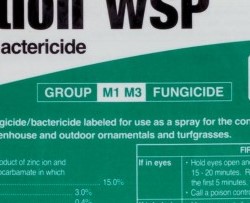
Plants can also quickly become immune to the active ingredients in fungicides. Once immune, the fungicide will not work as intended or will stop working altogether. For this reason, it is important to rotate fungicide applications between different modes of action.
While it may sound difficult to ensure you are rotating your fungicides appropriately, the Fungicide Resistance Action Committee (FRAC) has made this task much easier by classifying fungicides into groups (known as FRAC groups) based on the product's mode of action and resistance mechanism. Most fungicide product labels include a code that corresponds to their FRAC group.
To help prevent resistance, after 1-2 treatments with one fungicide, you would rotate to a new fungicide in a different FRAC group.
For all fungicides, it is important to read the label to make sure the fungicide can be used on the plant or grass you are trying to treat. Labels will also instruct you on how much fungicide should be used and how often to treat.
When to Apply Fungicides

Fungicides cannot heal grass and plants that have already been affected by a fungal disease, but they can stop the disease from growing further or spreading throughout the lawn. Because of this, fungicides should be applied to lawns before fungus grows as a preventative measure.
Farmers, commercial gardeners, and golf courses use disease forecasting systems to ensure fungicides are applied when needed. Their forecasting tools look at local temperature, relative humidity, and leaf wetness to determine which fungicides need to be used.
For homeowners, the local extension office can be a great source of knowledge about disease forecasting. Click here to learn more about extension offices and how to find your local office.
You may also know when to apply fungicides based on prior experience. If your lawn had brown patch last summer, applying a preventative fungicide in the spring and throughout summer is a smart idea.
Like weeds, some lawn diseases are more active in the spring or summer and some are more active in the fall or winter. Read our fungus and lawn disease guides to learn more about when certain diseases are most prevalent.
How to Apply Fungicides
Fungicides, like pesticides and herbicides, typically come in liquid and granule application types. Watch the video above or read our guide on how to apply liquid and granular products to learn how to apply the fungicide of your choice.
Reapply your fungicide every 14-21 days as needed, depending on the label of the fungicide. Rotate between fungicides from different FRAC groups after every 1-3 applications.







